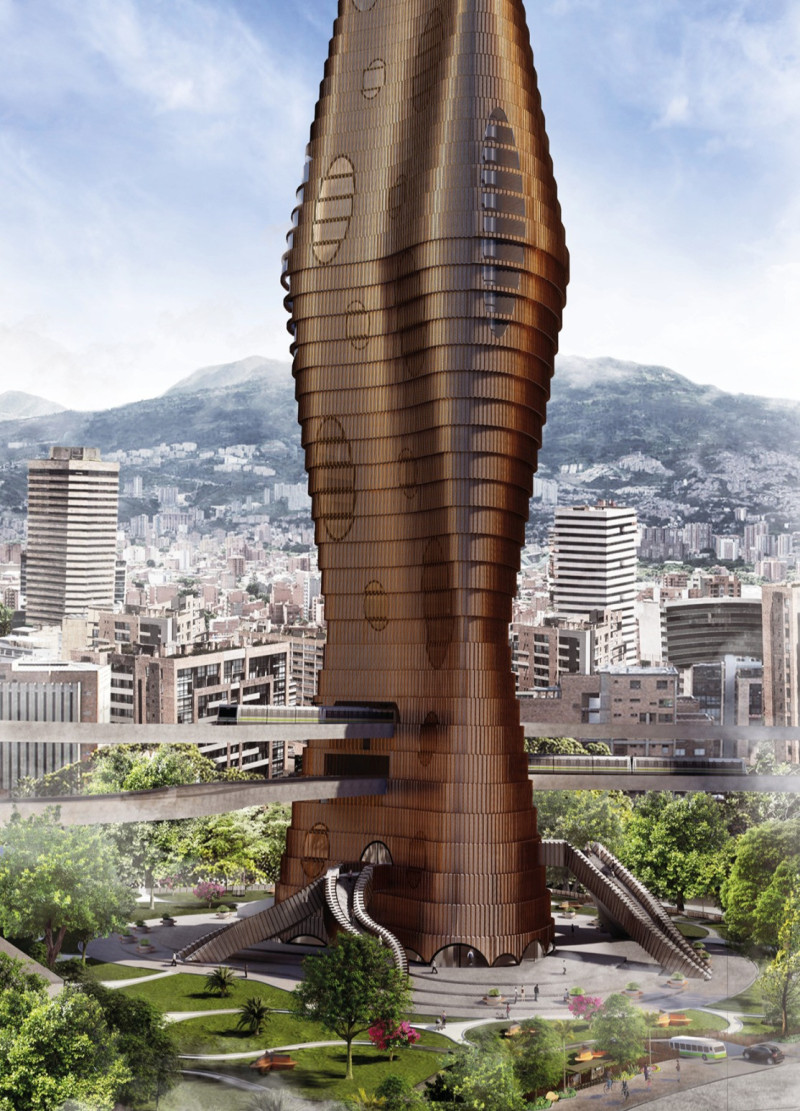5 key facts about this project
Ceiba Urbana addresses urban challenges in Medellin, Colombia. Located in a city facing significant air pollution, the project combines public transportation and environmental sustainability. Inspired by the Ceiba tree, the design integrates several functions, including train lines, an underground electric bus terminal, commercial spaces, environmental research centers, and residential units. This approach aims to improve mobility while maintaining a connection to the surrounding urban landscape.
Design Integration
The layout unifies transportation and environmental needs. Featuring four train lines and an underground terminal for electric buses, the project enhances public transport options. The structure encourages easy movement for both commuters and residents, effectively meeting the city's demand for efficient transportation.
Air Filtration Mechanism
One notable aspect is the pneumatic elevator system designed to move people while also filtering the air. These elevators operate by drawing in polluted air through openings placed throughout the building. The air is directed into filtering chambers in the basement, where it undergoes a process that helps reduce urban pollution.
Sustainability and Materiality
A strong commitment to sustainability is evident in the design's use of an electrochemical process. Aluminum serves as the anode in this process, interacting with CO2 and oxygen to create carbon-rich compounds. This also generates electricity for the building's operations. Approximately 11,000 vertical copper rods are used in the facade, adding visual interest and promoting ecological functionality. As the copper oxidizes over time, it creates a changing surface that responds to the urban environment.
Community and Environment
The layout promotes community by integrating a variety of spaces that encourage interaction. Residential units are placed alongside commercial areas and environmental research facilities. This combination fosters a lively atmosphere where urban living coexists with nature. People can engage with multiple activities in one setting, promoting a sustainable lifestyle.
The facade, made of vertical copper rods, tells a story of ecological awareness and resilience. As the building ages, it reflects its connection to the urban air quality, supporting the idea of blending transportation and ecological responsibility in Medellin.




















































